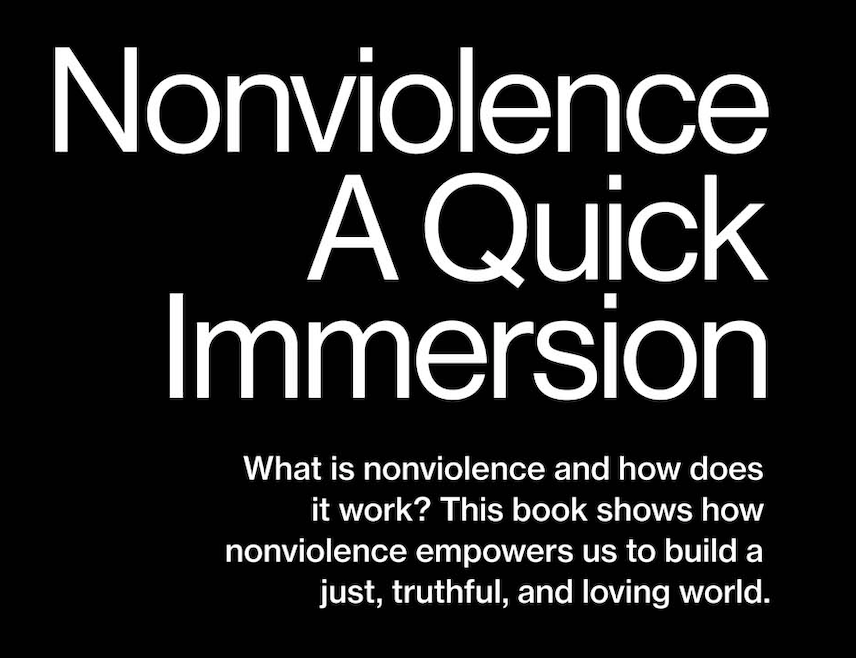A recent survey concludes, “22% of Biden supporters and 16% of Trump supporters said they would engage in street protests or even violence if their preferred candidate loses.” The good news is that majorities on both sides say they are willing to abide by the election result. But it is appalling that significant numbers of Americans are willing to consider violence. Now is the time for a primer in democratic values, nonviolence, and the rule of law.
Not everyone loves democracy. H.L. Mencken suggested that democracy puts the monkeys in charge of the circus. But in the U.S., we trust the electoral system as a nonviolent mechanism for resolving disputes and transferring power.
The connection between nonviolence and electoral democracy runs deep. Violent movements tend to be secretive and authoritarian, while nonviolent movements are inclusive and transparent. Violence tends to destroy liberty, while nonviolence affirms it. Violence breeds reaction and animosity, while nonviolence creates solidarity that builds community.
The advocates of violence are impetuous and impatient. Violence is unpredictable. And it rarely works. Riots, assassinations, and civil wars do not produce good outcomes. Political violence provokes backlash. It risks collateral damage. It causes people to dig in their heels. And of course, it is illegal.
Faith in the rule of law is foundational. Thomas Paine explained that in “absolute governments” the tyrant is the law. But in America, he said, “the law is king.” Paine was a revolutionary. The American system did begin in violence. But it was violence directed against the lawlessness of British tyranny.
The aspiration of the American revolution was for a stable, public system of law that would replace the reckless will of the tyrant. James Madison and Alexander Hamilton explained that “mutable” government is “mischievous” and “calamitous.” Instability “poisons the blessings of liberty.” A stable constitutional order can “break and control the violence of faction.” The cure for instability and violence is representational government, regular elections and the rule of law.
This system channels animosity into productive activity. If you did not win this time, get better organized and run again. In the meantime, hundreds of nonviolent methods can be employed. This includes petitioning the government and speaking out in public, as well as strikes, boycotts, and civil disobedience. Nonviolence works when it is organized, strategic, creative, and tenacious. The American civil rights movement provides an example.
Nonviolence rests upon fidelity to law. The nonviolent protester is willing to go to jail to mount an internal challenge to the system. She does not seek to evade punishment or to create an alternative system out of the barrel of a gun. Instead she works to transform the system from within.
She also expresses solidarity with her co-citizens, including those with whom she disagrees. Violent law-breaking makes it impossible for arguments to be heard. It also puts co-citizens at risk. Nonviolence opens the door to reasonable discussion. It treats opponents as reasonable beings who can be persuaded. It seeks to convert rather than to coerce.
Ideally the bonds of friendship would hold us together despite our differences. But in this polarized era, it is hopeless to imagine that we could all be friends. We disagree about too much. That’s the reality of liberty. In a free country, we retain the right not to be friends. We are free to disagree, protest, whine, and complain.
But it is the constitutional system that guarantees our right to disagree. So when protests break out after the election, they ought to adhere to the basic principles of a system that allows us to assemble, to petition the government, and to speak freely.
Sometimes it does seem that the monkeys are running the circus. Our differences run deep. But we can find common ground in a shared commitment to liberty and the rule of law. Everyone involved in the electoral process has expressed an implicit faith in this system. To run for office is to agree to abide by the result of the election. To cast a ballot is to affirm that this is a legitimate process. And if you don’t like the result, you can pound your chest and howl and scream, as long as you do so nonviolently.





